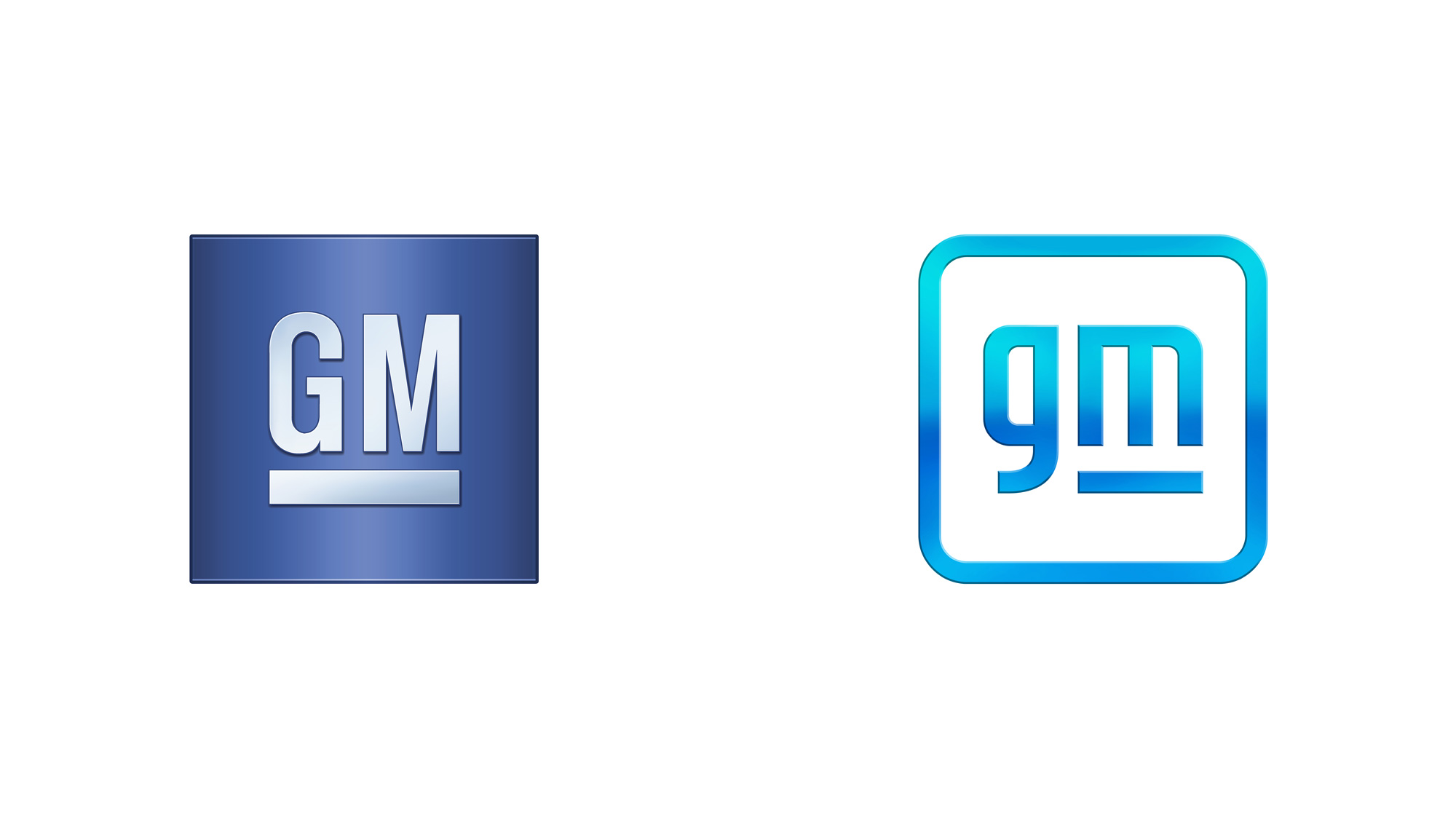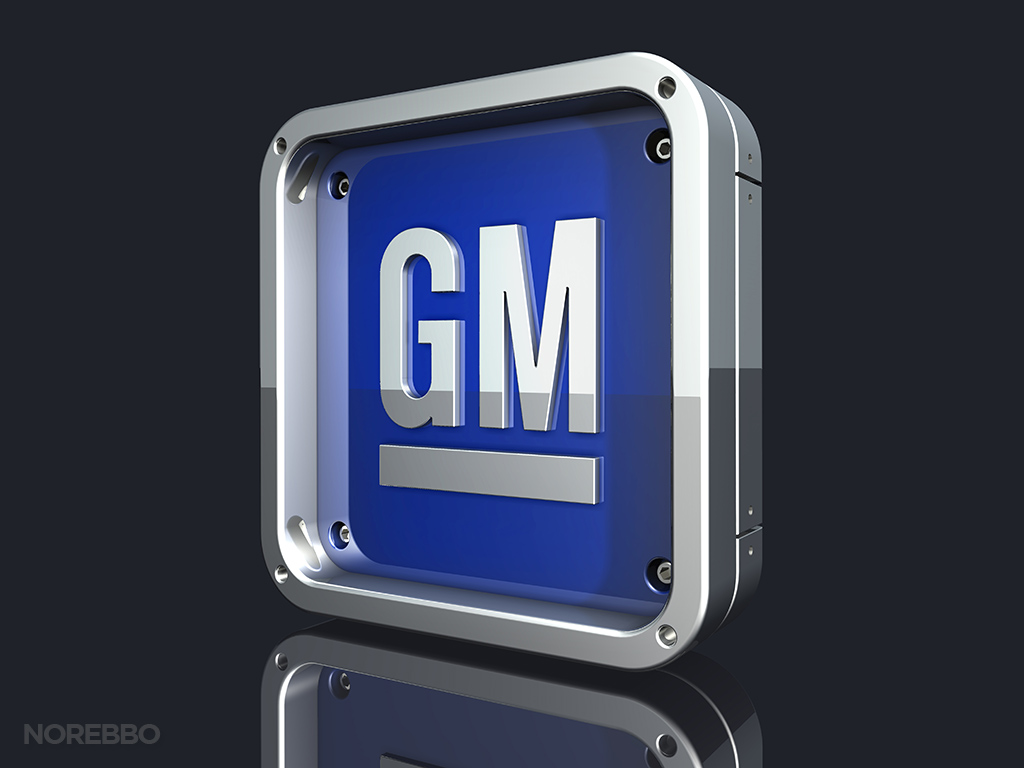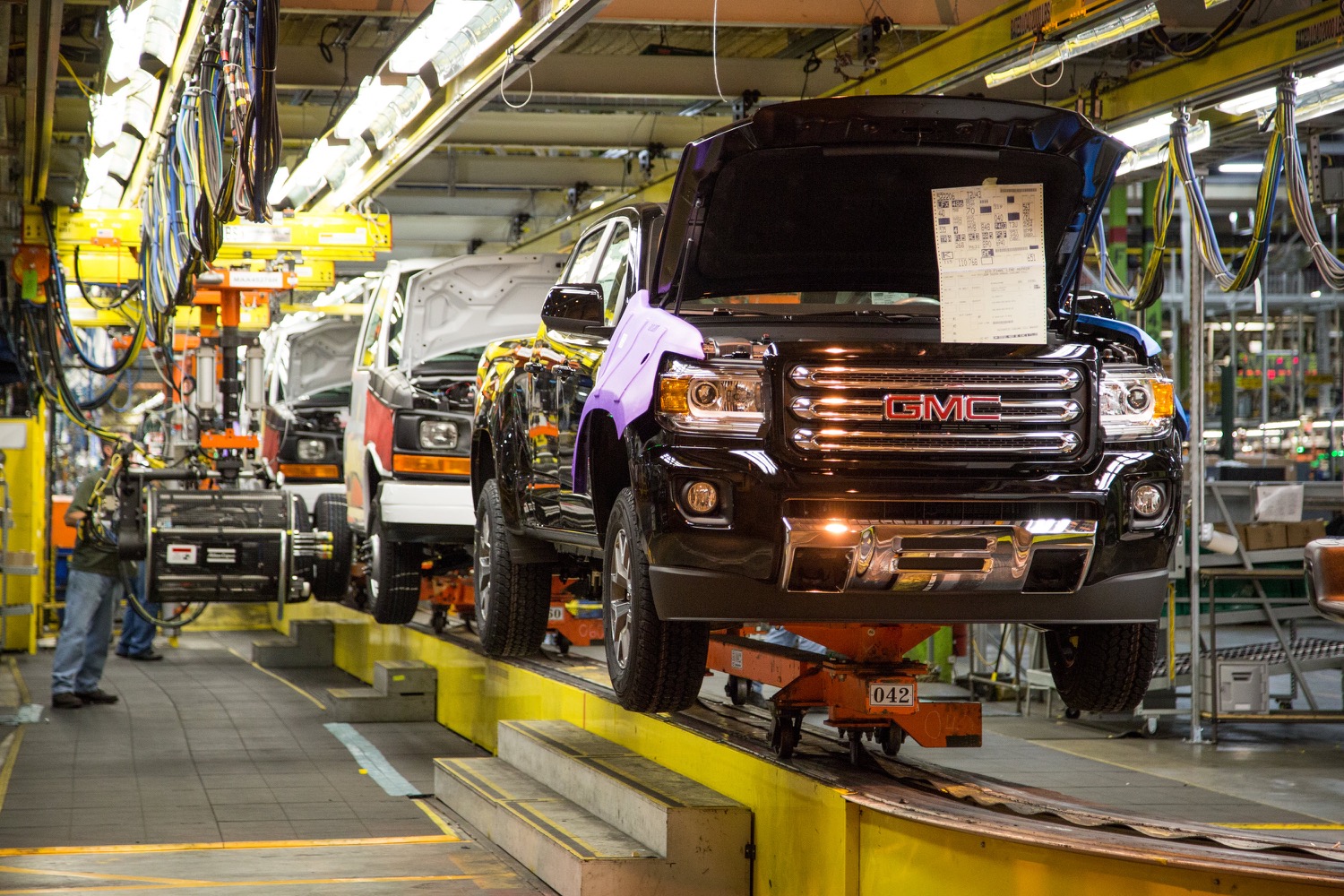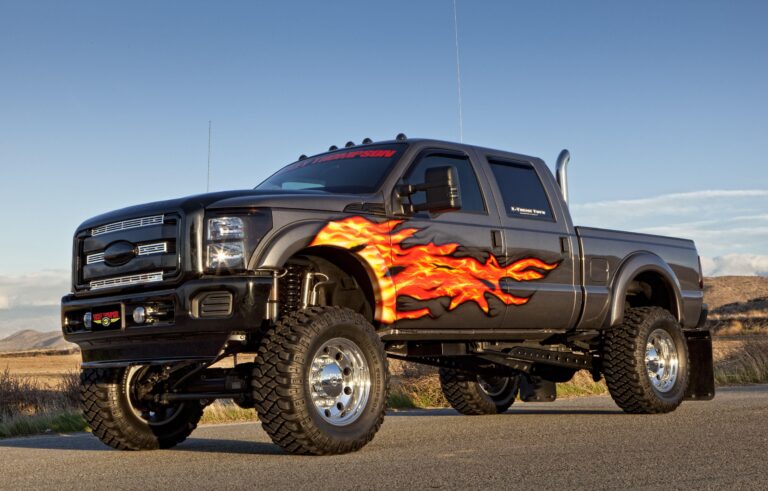Gm Car Brands: A Comprehensive Guide to General Motors’ Automotive Empire
Gm Car Brands: A Comprehensive Guide to General Motors’ Automotive Empire cars.truckstrend.com
An Enduring Legacy of Innovation and Diversity
General Motors (GM) stands as an undisputed titan in the global automotive industry, a conglomerate whose reach extends across continents and generations. More than just a car manufacturer, GM is an architect of mobility, responsible for shaping the way millions travel and interact with vehicles. At the heart of its enduring success lies a strategically diverse portfolio of car brands, each meticulously crafted to cater to specific market segments, consumer needs, and aspirational desires. From rugged workhorses to opulent luxury sedans, and increasingly, cutting-edge electric vehicles, GM’s brand strategy embodies a philosophy famously articulated by former CEO Alfred Sloan: "a car for every purse and purpose."
Gm Car Brands: A Comprehensive Guide to General Motors’ Automotive Empire
This comprehensive guide delves into the intricate world of GM car brands, exploring their individual identities, historical significance, current offerings, and future trajectories. Whether you’re a long-time enthusiast, a prospective buyer, or simply curious about one of the world’s largest automakers, understanding GM’s brand ecosystem is key to appreciating its past achievements and anticipating its future innovations.
I. The Legacy and Evolution of General Motors
Founded in 1908 by William C. Durant, General Motors began as a holding company for Buick, quickly expanding through the acquisition of Oldsmobile, Cadillac, and Oakland (later Pontiac). Durant’s vision was to create an automotive giant, consolidating numerous smaller companies under one umbrella. However, it was under the leadership of Alfred P. Sloan Jr. in the 1920s that GM truly solidified its multi-brand strategy. Sloan recognized the importance of market segmentation, positioning each brand with distinct price points, features, and target demographics, ensuring that GM could compete effectively against rivals like Ford, which primarily offered a single model (the Model T).
Over the decades, GM’s brand portfolio expanded and contracted, adapting to economic shifts, consumer trends, and global competition. The company navigated periods of immense prosperity, becoming a symbol of American industrial might, as well as challenging times, including its 2009 bankruptcy and subsequent restructuring. This turbulent history refined GM’s approach, leading to the divestiture or discontinuation of several iconic brands (like Pontiac, Oldsmobile, Saturn, and Hummer’s original iteration) to focus on a leaner, more profitable core group, while simultaneously investing heavily in new technologies like electrification.
II. Core GM Car Brands: A Deep Dive
Today, GM’s core strategy in North America revolves primarily around four powerhouse brands: Chevrolet, GMC, Buick, and Cadillac. Each brand occupies a unique space in the market, appealing to different consumer segments.

Chevrolet: America’s Everyday Hero
- Identity: Often dubbed "America’s best-selling brand," Chevrolet represents reliability, value, and a broad appeal. It’s the quintessential mainstream brand, offering vehicles for virtually every lifestyle and budget.
- Focus: Chevrolet’s lineup is incredibly diverse, encompassing fuel-efficient subcompacts, family-friendly SUVs, powerful pickup trucks, and iconic sports cars. It aims to provide practical, dependable transportation alongside aspirational performance vehicles.
- Target Audience: From first-time car buyers and small families to tradespeople and performance enthusiasts, Chevrolet serves a vast and varied demographic.
- Key Models/Strengths:
- Trucks: Silverado (full-size pickup), Colorado (mid-size pickup) – known for capability and versatility.
- SUVs/Crossovers: Equinox, Traverse, Tahoe, Suburban – popular choices for families due to space, safety, and comfort.
- Cars: Malibu (mid-size sedan), Spark (subcompact) – offer fuel efficiency and affordability.
- Performance: Corvette, Camaro – legendary sports cars providing exhilarating performance.
- EVs: Bolt EV/EUV, Blazer EV, Equinox EV, Silverado EV – leading GM’s electric revolution with accessible and practical EVs.


GMC: Professional Grade Utility
- Identity: GMC, short for General Motors Truck Company, positions itself as the "Professional Grade" brand. It offers a more refined, upscale, and robust alternative to Chevrolet’s mainstream trucks and SUVs.
- Focus: Exclusively focused on trucks, SUVs, and commercial vehicles, GMC emphasizes capability, premium features, and rugged sophistication. While sharing platforms with Chevrolet, GMC models often feature distinct styling, higher-quality interiors, and more advanced technologies.
- Target Audience: Customers who desire the utility of a truck or SUV but seek a more premium experience, often appealing to contractors, small business owners, and families wanting a touch of luxury.
- Key Models/Strengths:
- Trucks: Sierra (full-size pickup), Canyon (mid-size pickup) – offering more upscale trims like Denali and AT4.
- SUVs: Acadia, Terrain, Yukon (including the extended Yukon XL) – providing spacious and well-appointed interiors with strong towing capabilities.
- EVs: Hummer EV Pickup and SUV – a reintroduction of the iconic nameplate as a formidable, all-electric supertruck.
Buick: Quiet American Luxury
- Identity: Buick traditionally represents attainable, quiet American luxury. It often bridges the gap between mainstream and premium brands, focusing on comfort, sophisticated design, and a serene driving experience.
- Focus: In North America, Buick has largely transitioned away from sedans to focus exclusively on SUVs and crossovers, aligning with current market demand. Their vehicles prioritize quiet cabins, smooth rides, and user-friendly technology.
- Target Audience: Buyers seeking an upscale, comfortable, and reliable vehicle without the higher price tag or overt sportiness of full luxury brands. Often appeals to mature buyers and those prioritizing comfort.
- Key Models/Strengths:
- Crossovers: Encore GX, Envista, Envision, Enclave – offering a range of sizes and features with distinctive styling and premium touches.
- QuietTuning™: A hallmark of Buick, emphasizing noise reduction for a peaceful cabin experience.
- Avenir Trims: Buick’s top-tier luxury trims, offering exclusive styling and features.
Cadillac: The Standard of the World
- Identity: Cadillac is GM’s flagship luxury brand, historically known as "The Standard of the World." It embodies prestige, cutting-edge technology, bold design, and high-performance capabilities.
- Focus: Cadillac aims to compete directly with global luxury giants like Mercedes-Benz, BMW, and Audi. Its lineup includes sophisticated sedans, powerful SUVs, and increasingly, groundbreaking electric vehicles designed to redefine luxury mobility.
- Target Audience: Affluent individuals and those who prioritize status, advanced technology, opulent comfort, and exhilarating performance.
- Key Models/Strengths:
- SUVs: Escalade (iconic full-size luxury SUV), XT4, XT5, XT6 – offering commanding presence, luxurious interiors, and advanced features.
- Performance Sedans: CT4-V Blackwing, CT5-V Blackwing – track-capable, high-performance vehicles that showcase Cadillac’s engineering prowess.
- EVs: Lyriq (first all-electric SUV), Celestiq (ultra-luxury EV flagship) – spearheading Cadillac’s transition to an all-electric future.
- Super Cruise: GM’s advanced hands-free driver-assistance technology, often debuting on Cadillac vehicles.
III. Other Notable GM Brands (Past and Present)
While the four core brands dominate North America, GM’s history and global operations have included many others:
- Discontinued North American Brands:
- Pontiac: Known for performance and exciting styling (e.g., GTO, Trans Am). Discontinued in 2010.
- Oldsmobile: GM’s oldest brand, known for innovation and style. Discontinued in 2004.
- Saturn: Launched in 1990 with a "different kind of car company" philosophy, focusing on no-haggle pricing and unique sales experience. Discontinued in 2010.
- Hummer (original): Military-derived, ultra-rugged SUVs. Discontinued in 2010 but reborn as an EV sub-brand under GMC.
- Divested Global Brands:
- Opel/Vauxhall: European brands, sold to Groupe PSA (now Stellantis) in 2017.
- Saab: Swedish luxury brand, sold in 2010.
- Holden: Australian brand, production ceased in 2020.
- Emerging/Specialty Brands:
- BrightDrop: A new brand focused on electric light commercial vehicles and logistics technology, catering to the growing e-commerce delivery market.
IV. Key Pillars of GM’s Brand Strategy
GM’s approach to its brand portfolio is rooted in several strategic pillars:
- Innovation & Technology: GM is heavily investing in electrification (Ultium platform), autonomous driving (Cruise LLC), and advanced connectivity features (e.g., Super Cruise hands-free driving, Google built-in infotainment). These technologies are increasingly shared across brands, though often introduced first in Cadillac and then cascaded down.
- Market Segmentation: Each brand is carefully positioned to avoid cannibalization and capture distinct market shares. This ensures that GM has a compelling offering for a wide spectrum of buyers, from entry-level to ultra-luxury.
- Global Reach: While the core four brands are primarily North American focused, GM maintains a significant global presence through strategic partnerships (e.g., SAIC-GM in China) and localized product offerings, adapting to regional tastes and regulations.
- Sustainability: A monumental shift towards an all-electric future is central to GM’s long-term strategy, with a stated goal of producing only zero-emission light-duty vehicles by 2035 and achieving carbon neutrality by 2040.
V. Practical Advice for Choosing a GM Vehicle
Navigating GM’s diverse brand landscape can be exciting but also requires careful consideration. Here’s how to make an informed choice:
- Define Your Needs and Budget:
- Purpose: Do you need a daily commuter, a family hauler, a work truck, or a performance vehicle?
- Capacity: How many passengers/cargo space do you need?
- Fuel Efficiency: Is this a priority, or are you considering an EV?
- Budget: Establish a clear price range for purchase and ongoing costs (insurance, maintenance).
- Understand Brand Identity:
- Chevrolet: Best for overall value, broad selection, and reliable performance across segments.
- GMC: Ideal if you need robust truck/SUV capability with a more upscale, "professional grade" feel.
- Buick: Choose if you prioritize quiet comfort, sophisticated design, and attainable luxury in an SUV.
- Cadillac: Opt for cutting-edge technology, ultimate luxury, and high performance with a strong brand prestige.
- Research Specific Models: Once you’ve narrowed down a brand, dive into specific models. Read expert reviews, consumer testimonials, and compare features, safety ratings, and available trims.
- Consider Technology and Features: Evaluate whether features like Super Cruise, advanced infotainment systems, or specific safety packages are important to you. These often vary by trim level and brand.
- Test Drive Extensively: This is crucial. Drive the vehicle on various road conditions that mimic your daily commute. Pay attention to comfort, handling, acceleration, braking, and visibility.
- Assess After-Sales Support: GM boasts a vast dealer network, ensuring easy access to service, parts, and warranty support, which is a significant advantage.
VI. Challenges and Future Outlook
Despite its strong position, GM faces significant challenges. The transition to electric vehicles requires massive investment and retooling. Competition from both established automakers and new EV startups is intense. Supply chain disruptions, particularly for semiconductors, continue to impact production. Furthermore, maintaining distinct brand identities in an era of shared platforms and technologies requires constant innovation and marketing prowess.
However, GM’s future outlook appears robust. Its aggressive EV strategy, underpinned by the flexible Ultium battery platform, positions it as a leader in the electric revolution. Investments in autonomous driving through Cruise LLC promise to transform personal mobility. By focusing on its core strengths, leveraging technological advancements, and adapting to evolving consumer demands, General Motors and its diverse portfolio of brands are poised to remain a dominant force in the global automotive landscape for decades to come.
Price Table: Representative MSRP Ranges for Core GM Car Brands (North America)
| GM Brand | Typical Vehicle Types | Entry-Level MSRP (Approx.) | High-End MSRP (Approx.) | Key Differentiating Factor |
|---|---|---|---|---|
| Chevrolet | Sedans, SUVs, Crossovers, Trucks, Sports Cars, EVs | $20,000 | $80,000+ | Value, Diversity, Broad Appeal, Mainstream Performance |
| GMC | Trucks, SUVs, Commercial Vehicles, Hummer EV | $35,000 | $110,000+ | Professional Grade Utility, Premium Features, Rugged Luxury |
| Buick | Crossovers, SUVs | $25,000 | $55,000+ | Quiet Comfort, Attainable Luxury, Sophisticated Design |
| Cadillac | Luxury Sedans, Performance Cars, Luxury SUVs, EVs | $40,000 | $300,000+ (Celestiq) | Ultimate Luxury, Cutting-Edge Technology, Performance, Prestige |
Note: Prices are approximate Manufacturer’s Suggested Retail Prices (MSRPs) for base models and top trims, excluding destination charges, taxes, options, and market adjustments. Actual prices vary significantly based on model, trim level, powertrain, optional features, and local market conditions. The "High-End MSRP" for Cadillac includes the ultra-luxury, hand-built Celestiq, which starts at over $300,000.
Frequently Asked Questions (FAQ) about GM Car Brands
Q1: What are the main GM car brands available today in North America?
A1: The four primary GM car brands in North America are Chevrolet, GMC, Buick, and Cadillac.
Q2: Why did GM discontinue popular brands like Pontiac and Oldsmobile?
A2: GM discontinued these brands primarily as part of its 2009 restructuring and bankruptcy efforts. The goal was to streamline operations, eliminate redundant models, and focus resources on a smaller, more profitable core group of brands to ensure long-term viability.
Q3: Is GMC just a more expensive Chevrolet?
A3: While GMC vehicles often share platforms and powertrains with Chevrolet models (e.g., Sierra and Silverado), GMC differentiates itself with more upscale styling, higher-quality interior materials, exclusive features, and a "Professional Grade" positioning. They are designed for customers seeking a more refined and premium utility experience, justifying a higher price point.
Q4: What is GM’s strategy for electric vehicles (EVs)?
A4: GM is heavily committed to an all-electric future. Their strategy revolves around the modular Ultium battery platform, which allows for a wide range of vehicles across different brands (Chevrolet, GMC, Cadillac, Buick) and segments. They aim to have a fully electric light-duty vehicle lineup by 2035 and achieve carbon neutrality by 2040.
Q5: Are GM vehicles reliable?
A5: GM’s reliability has improved significantly over the years. Modern GM vehicles generally rank well in independent reliability studies (e.g., J.D. Power, Consumer Reports), with many models receiving average to above-average scores. Like any manufacturer, reliability can vary by specific model and year, so it’s always advisable to check reviews for the particular vehicle you are interested in.






